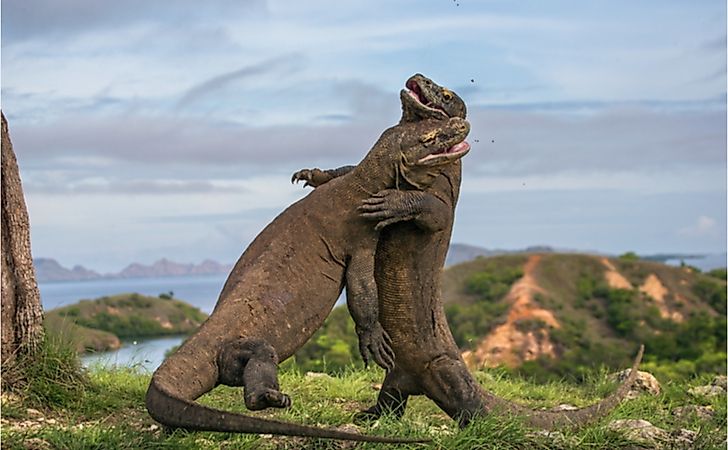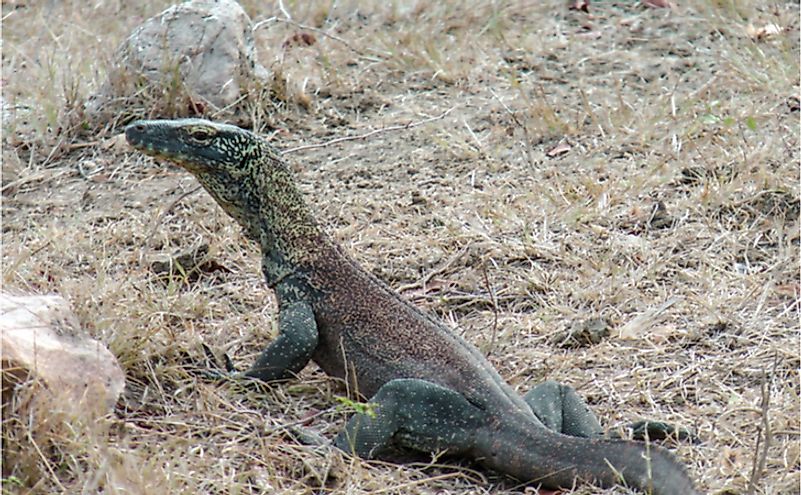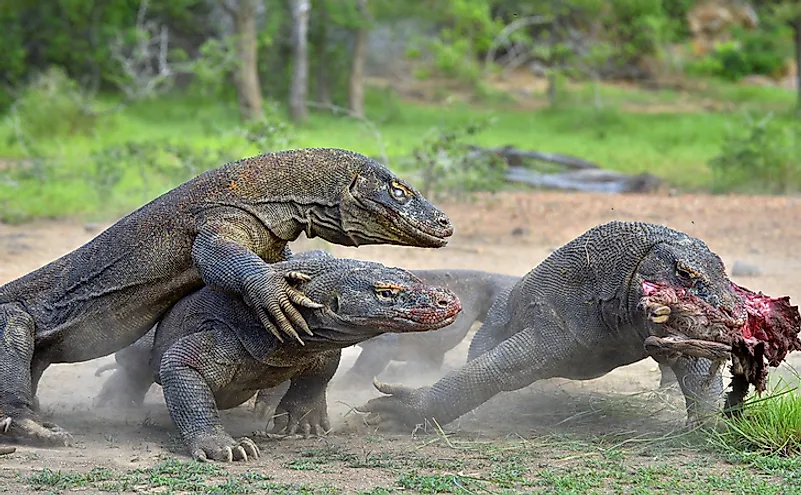8 Interesting Facts About Komodo Dragons

The Komodo dragon or Varanus komodoensis is the world's largest lizard species and is endemic to the Indonesian islands of Komodo, Gili Motang, Flores, and Rinca. This giant lizard is so different that it has attracted the attention of scientists from across the globe. Studies of these ultimate predators have revealed many unique facts about their morphology and behavior. Here are some fascinating facts related to the Komodo dragon.
8. Virgin Births Are Possible In Komodo Dragons -

Komodo dragon females do not always need to mate with a male to give birth. Researchers found that two of these dragon females living in captivity in Europe laid viable eggs without insemination from a male. The process of offspring production without fertilization by a male is called parthenogenesis. However, this phenomenon is visible in only 0.1% of vertebrates, a process unexpected in an animal as complex as a Komodo dragon.
7. Komodo Attacks On Humans Can Prove Fatal -
Although rare, attacks by this lizard have claimed a few lives in both captivity and the wild. According to a source from Komodo National Park, 24 attacks by Komodo dragons including 5 fatal ones were reported between 1974 and 2012. In 1974, a Swiss tourist who disappeared in Komodo Island is believed to have been killed and eaten by these lizards. In 2009, a local man died after he was killed by two dragons when he fell from a tree.
6. Komodo Appearances Can Be Deceptive -
Although the Komodo dragons appear massive and bulky, they can run surprisingly fast. At full speed, the animal can run at around 12 miles per hour while the average human springs at only 15 miles per hour. So, it is better to run as fast as possible if caught in front of an approaching Komodo dragon.
5. Komodo Dragons Kill Prey With Venom -

In the past, it was believed that highly potent bacteria present in the saliva of Komodo dragons killed their prey by infection and toxic shock. However, recently scientists have discovered that it is not the bacteria but the venom produced by the Komodo dragons that are lethal to their prey. These lizards are ambush predators. They lie in wait for an unsuspecting animal to pass by, pounce on it, and land a venomous bite on the prey.
4. Komodo dragons Are Ultimate Predators -
The Komodo dragon is designed to be the perfect predator. It has about 60 curved, serrated teeth that can be up to 2.5 cm in length, and a yellow, forked tongue. Its skin is reinforced by armored scales bearing tiny bones called osteoderms that makes it function like a chain-mail. The heavy armor makes the lizard nearly untouchable, the ultimate predator in its ecosystem. The natural armor is absent in juveniles but becomes more powerful with age to aid in defense.
With their special adaptations, these dragons become fierce hunters that can consume prey as large as a water buffalo. They can also eat 80% of their body weight in one feeding.
3. Komodo Metabolism Is Unlike Other Lizards -
The Komodo dragon's high speed and endurance are more than that of any lizard. Scientists believe they have discovered the secret to these impressive features of the Komodo dragon. These cold-blooded predators have several genetic adaptations that alter their mitochondrial activity to match that of mammals.
2. Komodo Dragons Are Known To Cannibalize Their Young -
In the absence of other prey or even under normal circumstances, adult Komodos might make a snack out of a young of their own species. Thus, soon after hatching, young Komodos climb trees to avoid being eaten by their own kind. They start living on the ground once they have attained a length of around 4 feet and those that survive can look forward to a long life of around 3 decades. To avoid being eaten by the adults, the young Komodos are also known to roll in fecal matter thereby picking up odor that the adults are likely to avoid.
1. Despite All Their Might, The Komodos Have Fallen Prey To Humans -
Despite its extreme survival skills and adaptations, the Komodo dragon is a vulnerable species. These animals generally tend to avoid humans and shy away from human presence. They do not attack unless provoked but some anecdotal claims of unprovoked attacks exist. Instead, humans pose a greater threat to this species. Illegal poaching of the dragons, restricted habitat, depletion of prey, and tourism pressures threatens them. They do not thrive in captivity where they become susceptible to numerous infections. Thus, it is important to keep Komodo dragon habitats safe and protect the species against other threats.











